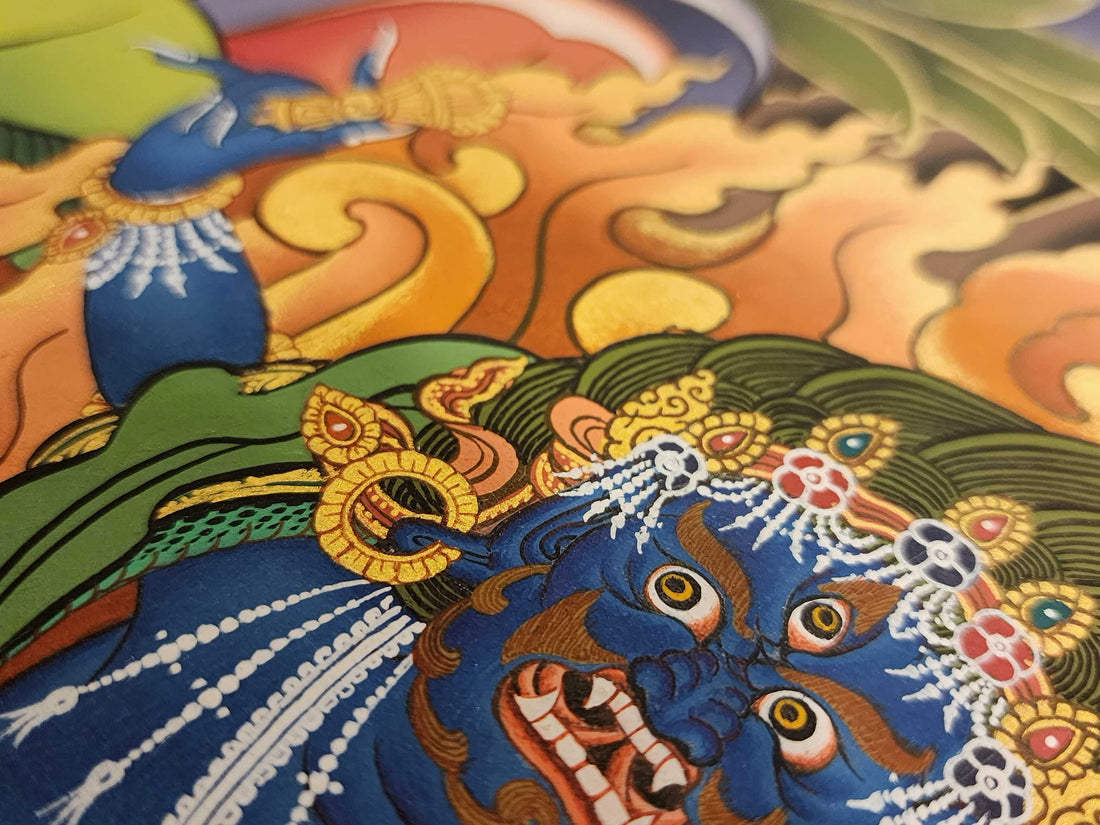
How to Meditate with Thangka Paintings: A Guide to Sacred Buddhist Art
Compartir
Introduction
Thangka paintings are not just beautiful works of art. They are spiritual tools designed to support meditation and mindfulness. For centuries, Tibetan practitioners have used these sacred paintings as visual guides to focus the mind, connect with deities, and cultivate inner transformation. Whether you are new to Buddhism or simply curious about meditation, learning how to meditate with a Thangka can deepen your practice.
Why Use Thangkas in Meditation?
—Visual Focus: Thangkas provide a central image that calms wandering thoughts.
—Sacred Symbolism: Each detail carries profound meaning that inspires inner reflection.
—Energy Connection: Many believe that meditating with a Thangka channels the blessings of the depicted deity.
—Mind-Body Harmony: Colors, forms, and sacred geometry align the mind with higher states of awareness.
How to Meditate with a Thangka
— Choose the Right Thangka
Select a Thangka that resonates with your spiritual intention. For example: Green Tara for compassion and protection. Medicine Buddha for healing. Mandala Thangkas for balance and clarity.
—Create a Sacred Space
Place the Thangka at eye level in a quiet, clean area. Lighting a candle or incense enhances the atmosphere.
—Focus on the Image
Sit comfortably and gaze softly at the central figure or symbol. Allow your breath to slow and your mind to settle.
—Visualization Practice
Imagine the deity or mandala radiating light and energy toward you, filling your body with peace and clarity.
—Silent Reflection or Mantra Recitation
Repeat a mantra (e.g., Om Mani Padme Hum for Avalokiteshvara) while visualizing the Thangka, deepening concentration.
—Integration
After meditation, take a few moments to reflect. Many practitioners keep their Thangka visible to carry the calm energy into daily life.
Benefits of Thangka Meditation
— Improves focus and mindfulness.
— Strengthens spiritual connection.
— Helps transform negative emotions into wisdom.
— Creates a sense of peace and sacred presence in the home.
Conclusion
Thangka art is more than decoration. It is a living meditation tool. By learning to meditate with Thangkas, practitioners can deepen their spiritual journey, cultivate compassion, and experience the transformative power of Buddhist wisdom in daily life.
